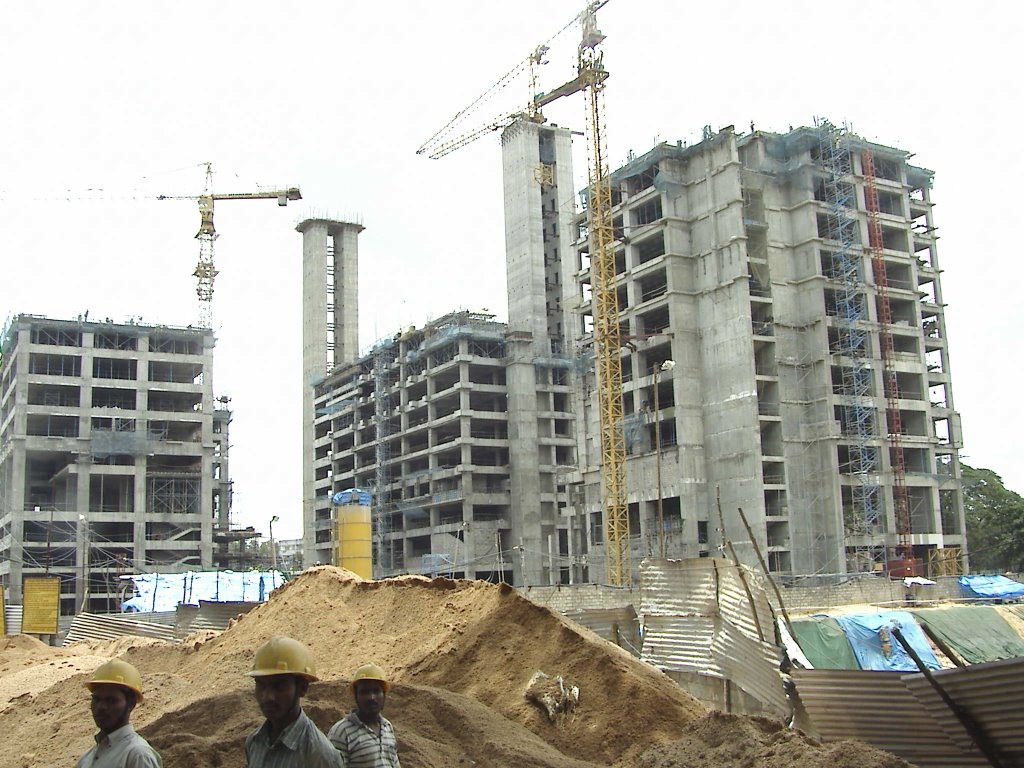Vivek Kaul
Earlier this month, the Daily News and Analysis reported that the Income Tax department plans to tax builders on their unsold homes. “The move is as per the central action plan for 2015-16, under which the I-T department can levy tax on any unsold flat by treating it as ‘income from house property’,” the news-report pointed out.
This news-report has gone viral on WhatsApp and it’s being suggested that this move will force builders to get rid of the unsold homes they have or else they will have to pay income tax on it.
An estimate made by Liases Foras, a real-estate research and rating firm, suggests that the total number of unsold homes in six metropolitan cities (Mumbai Metropolitan Region, Bangalore, Chennai, Hyderabad, Pune and National Capital Territory) stood at 6.88 lakh units or 919 million square feet, as on March 31, 2015.
And once builders start selling these flats real estate prices will fall. Theoretically this makes immense sense.
The real estate companies are owners of unsold flats. This means that they will have to pay a tax on the annual letting value pf these flats as they are owners of the unsold flats. The annual letting value is essentially the annual rent at which any home can be reasonably expected to be rented out. And given the fact that an income tax will have to be paid on this notional rent, the builders would rather sell the flat than pay an income tax on it. At least, that is what is being suggested.
Nevertheless, let’s see how the numbers stack up. The rental yield in India is currently anywhere between 2-3%. As Ashwinder Raj Singh is CEO – Residential Services of JLL India points out on a recent column on Moneycontrol.com: “An average of 2% of rental yield is considered a good deal for residential properties in India.” Rental yield is the annual rent that can be earned from a property divided by its market value.
The builders will have to pay an income tax on this rental yield. As per the Statement of Revenue Foregone that is released by the government along with the budget, the effective tax rate of the income tax paid by companies comes out to 23.22%. This number has been arrived at from a sample of 564787 companies.
As the Statement points out: “The statutory tax rate was 32.445 per cent in the case of companies having income upto Rs 10 crore and of 33.99 per cent in the case of companies having income exceeding Rs 10 crore resulting in an average statutory rate of 33.217 per cent.”
In an ideal world, I should have considered, the average rate of income tax being paid by builders, but given that I don’t have access to such a number, I will work with the average rate of income tax of all companies.
At an average tax rate of 23.22%, the builders will have to pay an income tax of 0.46-0.7% (23.22% of 2-3% rental yield) on the market value of the unsold homes. This is a very small number and is unlikely to hassle builders much. On paper, taxing builders on the unsold homes sounds like a good move, but it is unlikely to lead to a fall in price. And even if it does have an impact, it will not be huge. Further, how will the income tax department determine that a flat has been completed and has not been sold?
If the builders have to be forced to sell the unsold homes, the only way to do so is to attack their funding. This means going after domestic black money which inevitably finds it way into real estate. The Narendra Modi government has shown very little interest in going after domestic black money. All the attention seems to be on trying to get back black money that has already left the Indian shores.
Another data point that needs to be mentioned here is the bank lending to commercial real estate. During the period April 18, 2014 and April 17, 2015, which is the latest data that is available, the bank lending to commercial real estate grew by 8.8%. This when the overall bank lending grew by 8.7%.
This is clearly good news. Lending to commercial real estate is finally growing almost at the same rate as overall bank lending. Interestingly, this is the second month in a row, this has happened. For the period of one year ending March 20, 2015, lending to the commercial real estate sector by banks had grown by 8.9%. The overall lending by banks on the other hand had grown by a very similar 8.6%.
Further, the total amount lending to commercial real estate by banks in March 2015 had stood at Rs 1,66,500 crore. In April 2015, this number fell marginally to Rs 1,66,400 crore.
Now compare this to the period between April 19, 2013 and April 18, 2014, the lending to commercial real estate had grown by 21.2%, whereas the overall lending by banks grew by 13.9%. All these data points clearly show that the lending by banks to real-estate companies is slowing down.
And if the trend continues, builders will have to start cutting prices to sell the huge amount of unsold homes that they have been sitting on. Stay tuned.
(Vivek Kaul is the author of the Easy Money trilogy. He tweets @kaul_vivek)
The column originally appeared on Firstpost on June 11, 2015
